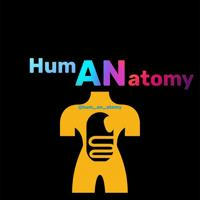
Human Anatomy | Science 🧬
Science chnl with about Human Anatomy Ad @advertisement_en_bot Dear subscribers, the channel administration is not responsible for advertising! By being in the channel, you agree to this automatically. ad https://telega.io/c/hum_an_atomy/card?r=JRSRn_i6
Show more4 592
Subscribers
+124 hours
-37 days
-3330 days
- Subscribers
- Post coverage
- ER - engagement ratio
Data loading in progress...
Subscriber growth rate
Data loading in progress...
Repost from Telegy | HUMOR NEWS 🔞
Herring strengthens the boner.
According to experts, it contains a large amount of vitamins omega-3, which has a positive effect on blood vessels and vitamin D, responsible for testosterone - the male sex hormone.
Sex giants take note.
Join 👉🏼 Telegy | HUMOR 🔞
▶️ Add all our humor channels
27610
Three-dimensional computed tomography of the nose to evaluate nasal structures and anomalies.
Human Anatomy | Science 🧬
53620
Repost from N/a
#advertisement
Who's here?
We've asked for a free link to a paid channel, for our subs.
x2-x3 Signals here
👉 CLICK HERE TO JOIN 👈
👉 CLICK HERE TO JOIN 👈
👉 CLICK HERE TO JOIN 👈
❗️JOIN FAST! FIRST
1000 SUBS WILL BE ACCEPTED
#advertisement
26800
What does the heart hold on to?
Our body needs to keep our internal organs stable. After all, a person often needs to jump, run, and perform other activities.
How does the heart maintain its position?
Perhaps the main fixator of our motor is the pericardium, a two-layer connective tissue structure enveloping the heart.
Human Anatomy | Science 🧬
👍 5
91210
Munson's symptom - protrusion of the lower eyelid when looking down and Y-shaped notch on the conjunctiva of the lower eyelid. Sign of Keratoconus.
Keratoconus is a degenerative, non-inflammatory eye disease in which the cornea takes on a conical shape, resulting in impaired vision.
👍 2
1 01910
Treating wounds with an electric current speeds up healing 3 times faster
Using a microchip, the scientists applied electrical impulses to skin cells. This approach accelerated the movement of cells to damaged areas and stimulated healing.
Healing was 3 times faster compared to the conventional "non-electrical" method.
👍 6❤ 3🔥 1
1 15990
Star cataract
Stellate (star-shaped) cataract is a type of congenital lens opacity characterized by the presence of pinpoint opacities in the area of the embryonic lens sutures and may resemble a star shape.
This star-shaped opacity can also occur in traumatic, complicated, diabetic, and other cataracts.
👍 2
1 18510
Repost from N/a
#ADVERTISEMENT
🚨 $5,000 GIVEAWAY FOR SUBSCRIBING TO THE CHANNEL
She has made $20,000 from trading in the last week and in honour of this she has decided to raffle off some of the profits between her audience.
There are lots of prizes, everyone will win! To participate you need to :
1. A subscription to Lisa's channel, where she also shares her trades.
2. Follow him so you don't miss the start of the drawing
👇👇👇
https://t.me/+u-7qxg1IucpkYTEx
https://t.me/+u-7qxg1IucpkYTEx
https://t.me/+u-7qxg1IucpkYTEx
#ADVERTISEMENT
27000
Various types of sutures are used to connect the edges of a skin wound.
According to the technique of application, they are classified as simple knotted, continuous (wrap, immersion, mattress, cosmetic), U-shaped and Z-shaped.
In relation to the skin surface, sutures are divided into vertical and horizontal.
Depending on the relationship to the wound sutures are supra wound (the wound cavity remains under the suture) and sub wound (the thread is carried under the bottom of the wound).
Extrafocal connection of the wound edges is also used.
According to the function performed, we can distinguish adaptive, leading and hemostatic sutures.
Differences in the method of application divide the sutures into manual and mechanical.
There are also non-invasive methods of wound closure - bringing the edges together with a leukoplasty, zipper patch, adhesive dressing on hooks.
👍 8❤ 1
4 246300
Memory anomalies: hypermnesia and hypomnesia
Hypermnesia refers to the ability to remember vast amounts of information or to reproduce details of past events with extraordinary accuracy.
Hypomnesia, on the other hand, is characterized by a reduced ability to reproduce past events or information.
Such abnormalities can be related to a variety of factors, including genetic traits, brain structure, or even traumatic events.
However, the study of these phenomena is ongoing, and at this point, scientists are still trying to fully understand the causes and mechanisms behind these memory anomalies.
👍 5❤ 1
1 09840
